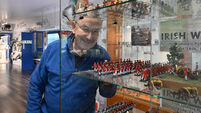Editor: Bailey said ‘I did it, I killed her’

Helen Callanan, news editor of the Sunday Tribune in 1996, said she regarded those remarks made in February 1997 as a confession and reported them to gardaí. She knew Mr Bailey had said they were a “regrettable black joke” but she considered it very serious, unusual, and upsetting as Sophie Toscan du Plantier was murdered weeks earlier.
Jim Duggan, for Mr Bailey, put it to Ms Callanan that Mr Bailey was “very cross” someone had said he was a murder suspect, wanted to find out who, and had mentioned that the information was worth €20,000 for a possible defamation action. Ms Callanan said it would not be incorrect to report he was a suspect because he was a suspect.













